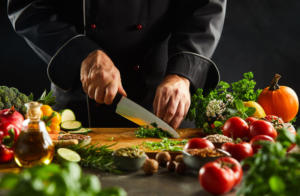For those in recovery, a sense of belonging can provide an extra measure of support when it comes to achieving their goals. Arizona State University’s “Recovery Rising” is a program that provides community and companionship through its club, “Friends of Recovery.”
DEEPER DIVE: Ranking Arizona: Top 10 behavioral health facilities for 2023
In 2019, ‘Friends of Recovery’ was a club of three. In the last four years, it has grown to 38 active members supporting each other through recovery from substance addiction, eating disorders, depression, and anxiety. Tom Quinn, an Academic Success Advisor at Arizona State University, is the club advisor. He helps to facilitate meetings and support students in sustaining their recovery and healing.
“Having a shared circle and friends is incredibly important,” Quinn said. “People in active addiction or in the throes of a mental crisis simply feel that they have no one to turn to, it’s vital to have a familiar face.”
Risa Enrique, Educational Outreach and Student Services advisor at Arizona State University, explains that ‘Recovery Rising’ is an umbrella program that, “actively encourages students to explore options in their community.” The club, ‘Friends of Recovery’ pushes students in recovery to, “attend recovery meetings, participate in campus supported events, and best understand the resources available on and off campus.”
From The Association of Recovery in Higher Education website, they are most focused on, “representing collegiate recovery programs (CRPs) and collegiate recovery communities (CRCs).” Their mission is to “Champion, Develop, and Sustain Excellence in Collegiate Recovery.” “ARHE provides the education, resources, and community connection needed to help change the trajectory of recovering student’s lives. We are a network of professionals, administrators, faculty, staff, students, parents, and policy makers.”
‘Friends of Recovery’ relies on their members to keep the club running. Its students play an active role in running weekly meetings and encouraging each other.
Professionals in the field of recovery like Whitney Howzell, Executive Director of Claudia Black Young Adult Center in Wickenburg, Arizona said support from family and friends can make a difference.
“The folks that I have seen sustain recovery instead of a perfect recovery, have a support system,” said Howzell. “They have community and someone they can be vulnerable with.”
According to the article, ‘Everyone wants a community’: a qualitative investigation of the challenges and service needs among college students in recovery, “isolation was ultimately the result of differences in norms and values between students in recovery and many students in the wider student body.” It was found that students in recovery have informal networks of others in recovery, but they did not necessarily see this as being part of a community.
“Recovery looks different for each person, and within Recovery Rising, we hold the belief that a student is in recovery when they say they are. It is not based on a specific standard or requirement, but rather when a student expresses the personal choice to identify as someone in recovery,” said Enrique.
44% of ASU students do not drink alcohol and 87% of ASU students do not drink heavily, said the American College Health Association-National College Health Assessment in a survey done in Spring 2022.
“A student in recovery compared to one who does not identify as being in recovery is the same as each individual being different with varying interests, goals, challenges, and values. A student in recovery may be more mindful of their surroundings and interactions, but overall, they are simply a student living their daily life,” said Enrique.
Although the most active members of the club are in recovery for substance misuse, “as we are expanding, we are seeing much more in the terms of mental health and mood disorders,” Quinn said.
Howzell of the Claudia Black Young Adult Center said that a group like Recovery Rising can provide help for young people struggling with mood disorders and that can help when it comes to treatment.
“With my young adult population, I’m typically seeing them have an untreated mood disorder that’s driving the addiction,” Howzell said. “What we tend to see, particularly at the inpatient level, is complex trauma and multiple diagnoses, it’s very layered,” Howzell said. “We are not just talking about the actual symptoms that brought them into treatment to begin with.”
Most of the club members in ‘Friends of Recovery’ are already established in recovery outside of Arizona State, but recovery is not linear, and this club provides safe, structured meetings to help students reach their common goal, sobriety in an on campus, college setting.
‘Friends of Recovery’ follows the existing recovery meeting format, which encourages active listening and honest sharing.
“It’s very important to be listening, not waiting for your turn to talk,” said Quinn.
No longer looking for a hangover cure, Enrique also believes that listening can help debunk negative stereotypes surrounding students in recovery.
“One of the best ways we can debunk stereotypes is by listening. When we actively engage with one another in conversation and lend an ear, we are able to understand someone else’s perspective. The gift of learning someone else’s story is that we grasp what their experiences truly are and are not misinformed. The act of listening goes a long way in showing empathy and building belonging amongst a group,” said Enrique.
Quinn, once a member of ‘Friends of Recovery’ and in active recovery himself, leads club members with empathy and enthusiasm.
“For my own recovery, I need to approach my participation in the group as active as can possibly be,” Quinn said. Even in this staff role, I’m in the discussion because I gain so much out of them. It has helped me so much.”
The biggest challenge for the club is maintaining its growth. In recent times, many of the students who have joined are seniors. Quinn says that recovery is a lifelong process, although you can’t guarantee everyone you meet in your recovery process will stick around. The club has struggled in ensuring continuity when it comes to leadership.
“It’s very challenging to pass the torch of next club president and hold an election for next year so that’s been our primary focus,” Quinn said. “It’s a very interesting line to walk between attracting people naturally and how much we need to promote. How can we start the next year with continuation of our leadership board, rather than starting from scratch every 12 months?”
Friends of Recovery and other groups like it can help individuals but for more intensive care, centers like the Claudia Black Young Adult Center can be a challenge because of the expense involved. Howzell said, “there is a price of privilege for this type of work,” making this the number one barrier in accessing significant treatment.
Quinn says recovery is very contingent on one’s willingness and surrender to their journey.
“People are only going to see success in recovery if they are willingly joining but as a student organization, we have an obligation to promote the resources that ASU has.” Quinn said.
To Enrique, “Community and a sense of belonging is vital to all students within the ASU community,” and she says, “the same goes for our students within Recovery Rising.”
Enrique also believes that making staff aware of how to approach conversations surrounding recovery is also extremally important.
“‘Recovery Rising’ has “taken efforts to bring awareness to faculty and staff across the institution by hosting training sessions that address what recovery is and how to approach conversations with students. Staff have shown increased knowledge and appreciation for the presence of a recovery program on campus,” said Enrique.




